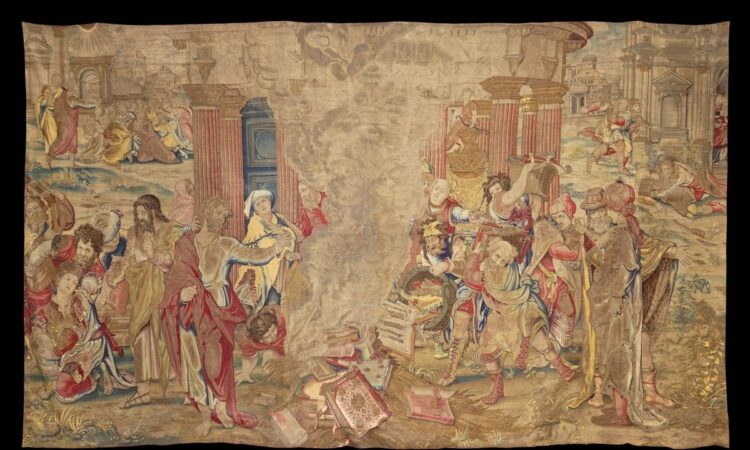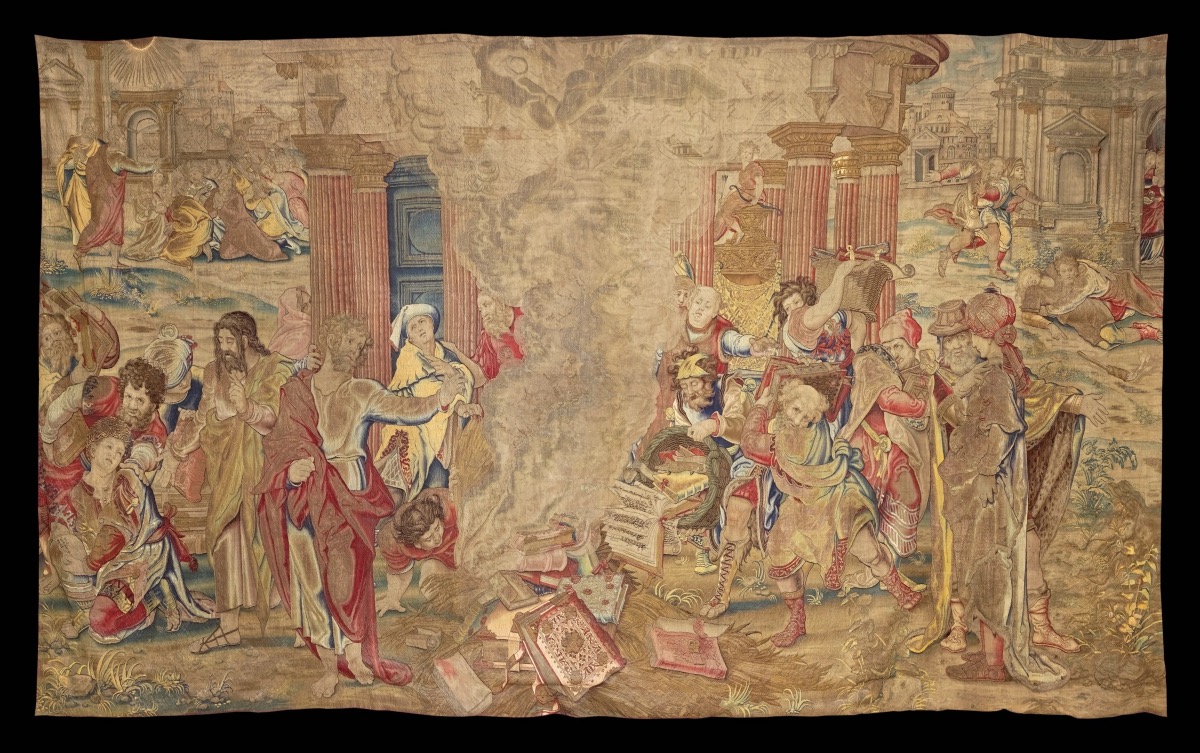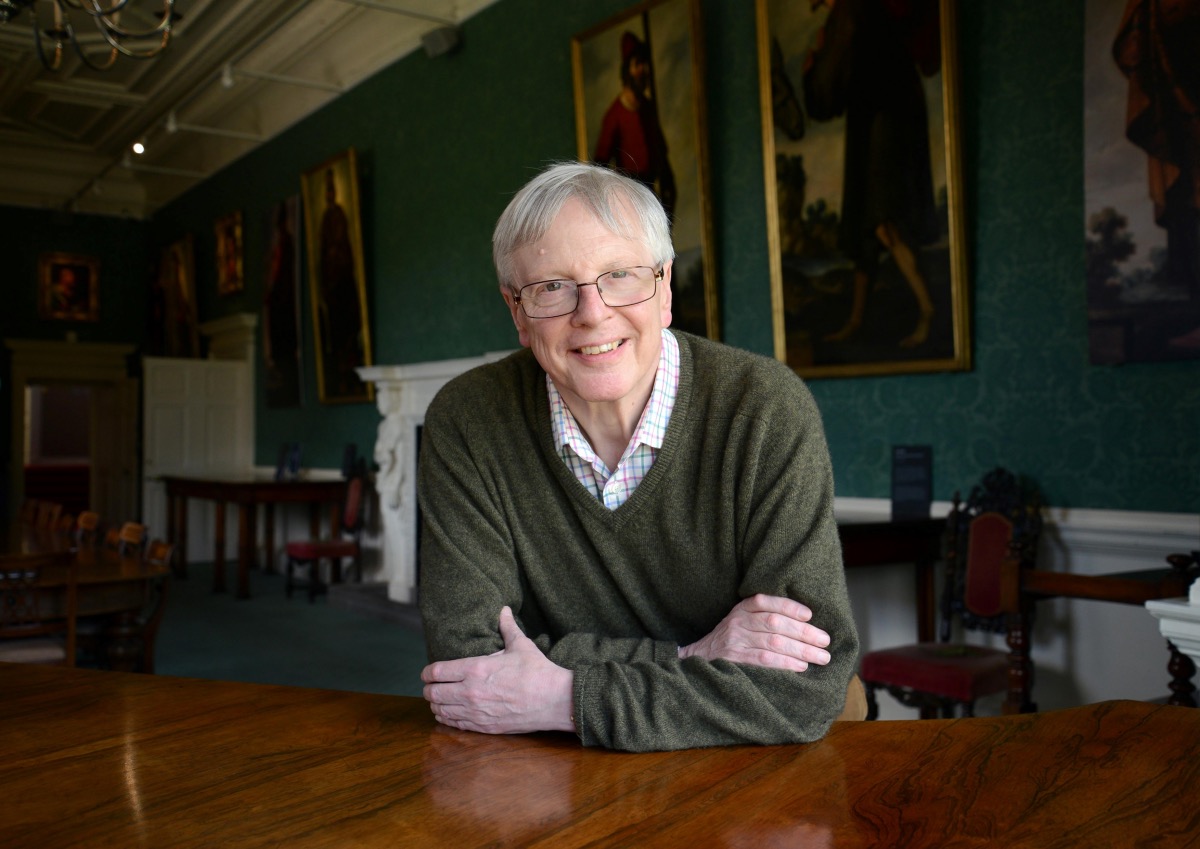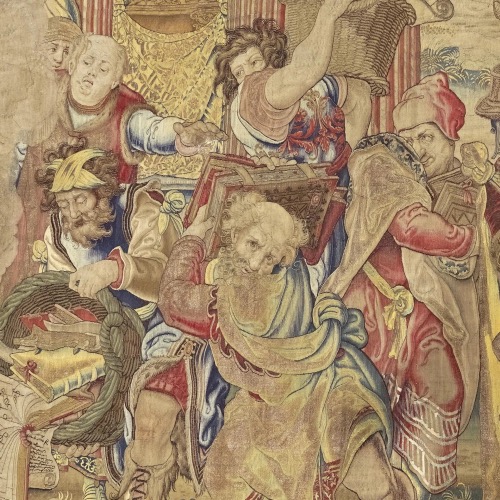Sight Magazine – UK’s Faith Museum seeks funds to acquire tapestry reflecting religious changes in England’s Tudor era

-
- Angela Youngman
Norwich, UK
Lost for over 200 years, a monumental tapestry commissioned by Henry VIII reflecting Tudor-era religious changes has resurfaced in a Spanish museum.
A campaign is now underway to acquire the tapestry and bring it back to the UK for display in the new Faith Museum at Auckland Castle.
The tapestry showing ‘St Paul Directing the Burning of the Heathen Books’. PICTURE: Courtesy of The Auckland Project/Faith Museum.
Designed by Pieter Coecke van Aelst, the tapestry – titled St Paul Directing the Burning of Heathen Books – was one of a series of nine tapestries ordered by Henry VIII on the life of St Paul, a popular subject among 16th century monarchs coping with religious upheaval.
Jonathan Ruffer, founder of The Auckland Project, told Sight “there are two reasons why objects form the fabric of a nation”.
Jonathan Ruffer, founder of The Auckland Project. PICTURE: Courtesy of The Auckland Project
“One is they are exceptional pieces of art; the other is because they have a particular resonance in the story of a nation. Here, both are the case. Besides being the ‘Holy Grail of Tudor Tapestry’, this tapestry is effectively the birth certificate of the Church of England.”
The tapestry was commissioned in 1535 when Henry VIII had broken with Rome and declared himself Supreme Head of the church in England. It was a period when Henry had issued a series of proclamations against what he regarded as heretical books, ordering them to be publicly burned. In specifying this subject for the tapestry, experts believe the King was identifying himself with St Paul.
The tapestries were eventually displayed in Hampton Court Palace and acted as a clear statement of Henry’s political and religious authority.
The history of the nine tapestries can be traced until 1770 when they then disappear from all records. It was believed that they had been all been destroyed – until one surfaced in Spain in 2014m having been identified by Thomas P Campbell, director of the Fine Arts Museum in San Francisco.
Sutherland Forsyth, associate director of heritage & engagement at the Auckland Project, described the tapestry as a “national treasure”.
“[I]t’s importance as a work of art, a religious, political and social symbol, and an insight into the mind of Henry VIII, cannot be overstated. It opens up so many new opportunities for education and engagement with children, young people and adults….”
He said this could include teaching school children about the Reformation, the Tudors, and “how to debate contentious topics, and we can use it to develop skills in sewing and weaving which will enhance pupils’ fine motor skills” as well as enabling adults to “explore the art of tapestry weaving, the context of its creation following the break with Rome and its contemporary relevance, through talks, creative courses and events”.
“The tapestry can be a source of inspiration for generations.”
A detailed look at ‘St Paul Directing the Burning of the Heathen Books’. PICTURE: Courtesy of The Auckland Project/Faith Museum.
The Spanish Government is willing to allow the tapestry to be returned to the UK due to its historic connections with Bishop Auckland, and the presence of the Faith Museum.
Auckland Castle is closely linked to Henry VIII due to the fact that it was the seat of the Prince Bishops of Durham. Cardinal Wolsey, Henry VIII’s Lord Chancellor, was also the Prince Bishop of Durham. It was Wolsey who was charged by the King to deal with his “secret matter” – the annulment of Henry’s marriage to Catherine of Aragon so that he could remarry and sire a son. Wolsey was not successful, and Henry ultimately took direct action, severing the Church in England from Rome – a move which opened the way for him to marry Anne Boleyn.
Another Prince Bishop of Durham, Cuthbert Tunstall, was involved with burning copies of Tyndale’s Bible.
The Faith Museum, at Auckland Castle, contains a rare copy of a Tyndale Bible which survived the burnings under Henry VIII, and a portrait of Sir Thomas More made just before his execution following his refusal to accept Henry as Supreme Head of the Church.
If the campaign to buy the tapestry is successful, it is hoped it will go on display in 2024 in an area where art works reflect both contemporary issues and timeless ideas. Measuring six metres long and 3.65 metres high high, it would be placed in an interior room within the Faith Museum’s Great Gallery where natural light can be excluded and would be on view for months at time rather than continuously so as to protect its condition.









